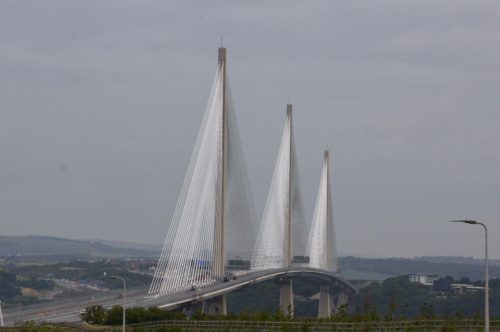Queensferry Crossing – the facts and figures
Following a construction period which began in 2011, The Queensferry Crossing opened to traffic for the first time earlier today.
Here are some facts about the newest bridge over the Forth which is the biggest infrastructure project in Scotland in a generation.

- The Queensferry Crossing is the longest three tower cable-stayed bridge in the world spanning 1.7 miles.
- It took 15 days pouring concrete continuously to form the foundations for the South Tower. This became the first world record for the bridge – the world’s longest continuous underwater pour.
- The top of each tower is 207 metres above high tide – that is 48 Lothian Buses stacked on top of each other!
- If you laid all the cabling used on the bridge out flat then it would nearly stretch around the world. The cabling extends to 23,000 miles and the circumference of the globe is 24,874 miles.
- The overall scheme is 13.7 miles long when you include the major motorway upgrades to the north and south of the bridge.
- The Intelligent Transport System will introduce variable mandatory speed limits for the first time in Scotland to ease traffic congestion. This also controls the dedicated bus lanes within the motorway hard shoulders which is said to be another first.
- The cost of the new bridge was significantly reduced by deciding to use the Forth Road Bridge as a public transport corridor. This reduced the width of the new crossing and so the cost reduced too.
- The bridge was built by Forth Crossing Bridge Constructors (FCBC) which is a consortium of Hochtief from Germany, American Bridge from Pittsburgh, USA, Dragados from Spain and Morrison Construction from Scotland.
- It was in June 2013 that the public vote decided on the name Queensferry Crossing.